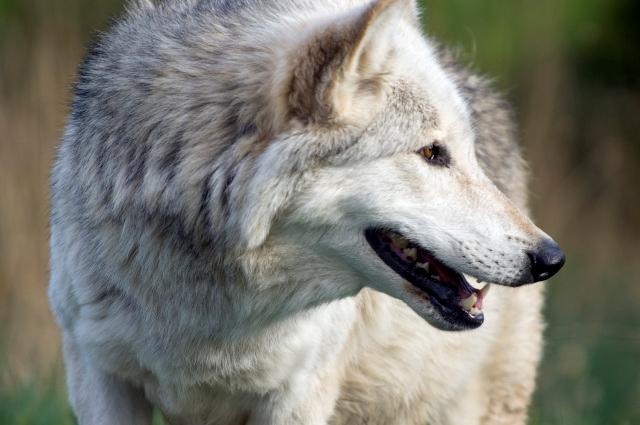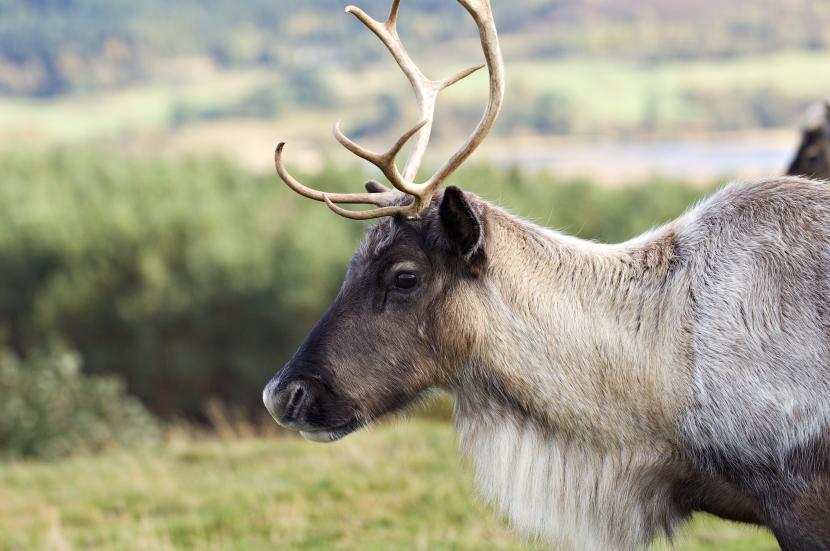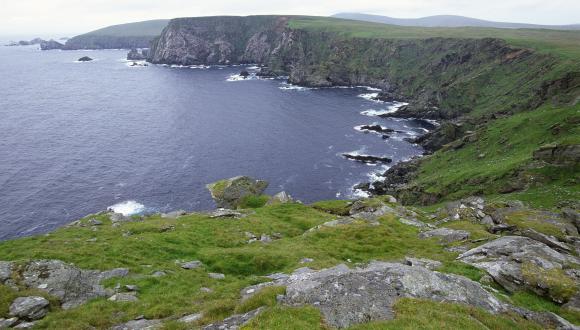
Rooms with a view
6 June 2023
The views were undeniably breathtaking when I met Ben Supple at the Highland Wildlife Park. Director of Engagement and Business Development with the Royal Zoological Society of Scotland (RZSS), he was gazing out over the Cairngorms National Park as he reflected on the remarkable development of Scotland’s Wildlife Discovery Centre. It’s a project that epitomises modern conservation focus, and in a setting that is as stunning as it is appropriate.

The Highland Wildlife Park at Kincraig, near Kingussie, has long been one of Scotland’s most popular visitor attractions. It offers a warm welcome to those eager to see species as diverse and elusive as wildcats, polar bears, and tigers. Now it is arguably going to have even more of a Scottish focus.
Ben is clearly enthusiastic about the impact the new Wildlife Discovery Centre will have. “One thing I love about the project is that it touches on every aspect of conservation and engagement,” he says “People will come here and see conservation in action. The wildcat restoration project is a perfect example. Visitors won’t just see the cats we have in wildcat wood, as they have always been able to, they will now be able to go to the new hilltop conservation hub and see the conservation breeding centre, which is where the wildcats are bred and supported to the point where we are able to release them into the wild. The 360 degree view from the hilltop means that from exactly that same point visitors can turn round and see out beyond the fences of the wildlife park into the Cairngorms National Park itself, the very area where these wildcats are actually being released. This will allow visitors to feel truly at the heart of conservation.”

The feeling amongst staff at RZSS is that this is a transformational project, which comprises three distinct visitor hubs, creating a destination where visitors will not only see wildlife first hand but learn about the biodiversity challenges facing nature. The goal is to ensure that visitors leave engaged and enthused about the role we can all play in conservation on our own doorstep.
Of course it is important to emphasise that Scotland’s Wildlife Discovery Centre takes into account wildlife concerns worldwide, and an enviable international reputation gives RZSS a fantastic platform to talk about nature and conservation issues. Side by side with their messages about the more exotic species in the park, such as snow leopards, tigers, and polar bears, will be introductions to the work needed to conserve not just Scottish wildcats but the less celebrated but nonetheless important species such as pine hoverfly and small scabious mining bee.

That sense of unveiling the bigger picture and cleverly connecting the international with the local theme runs through Ben’s thinking. “We are incredibly proud of the role the RZSS is playing, and will continue to play in protecting native species here in Scotland, in the Highlands, in the Cairngorms National Park. We recognise that we have an extraordinary opportunity at the Highland Wildlife Park to be a real exemplar. Because when we talk about biodiversity challenges in Scotland we’ve got an opportunity to place issues in an international context.
The NCHF has certainly been a financial boon to the aspirations behind the Scotland’s Wildlife Discovery Centre. Funding, however, is only one part of the complex jigsaw being assembled at Kincraig. “The Highland Wildlife Park has a key role to play in supporting the local economy,’ says Ben. “It has done so for the past few decades, and we anticipate our visitor numbers will increase and deliver an even greater economic impact through sustainable tourism. But whilst we are very keen to increase our visitor numbers, that can only be one measure of success. In fact the key measure of success here will be the impact we believe we can have. When people come here we want to inspire them, because much as it is fantastic what we are doing, we cannot work in isolation, we need to inspire others.”

A total of three new buildings will emerge in the coming weeks and months and will surely provide the perfect platform from which to inspire. The Hilltop Visitor Centre will be joined by a Learning Hub, and Discovery Centre. “We are aiming to create a world class experience here at Highland Wildlife Park,” Ben notes. “We’ve always been proud of the fact that we deliver really important outreach in the local communities. The hubs that we are creating are really going to tie the whole visitor experience together by taking in the aspects beyond the park. That matters because a key thing we wish to emphasise is having our visitors looking beyond our site and trying to almost imagine Highland Wildlife Park without fences - metaphorically speaking - because the work we are doing here is not in the slightest contained to Highland Wildlife Park, it touches on the Cairngorms, the Highlands, and Scotland as a whole.
“I think the Discovery Centre in particular gives us that opportunity to tell the story of where Scotland’s wildlife has been, explore the present challenges, and figure out what the future might be for Scotland’s wildlife. Whether visitors come here for an hour, or all day, we have this incredible opportunity to engage and inspire people.

“The Learning Hub is incredibly important to us too. It’s a community resource which is at the edge of the park for a specific reason as it will help us engage outside normal operating hours when the park is closed. Our vision for the Learning Hub, which enjoys commanding views over to some of Scotland’s most stunning mountains, is that it embraces both formal and informal education. For example, there is a huge rewilding debate in Scotland and what better place to come and have that discussion. It is an incredibly complex subject and there are wide ranging views, but what a setting to learn about what it is we are doing here, and look out to the wider environment as we contemplate the issues.
Another big issue that excites Ben is inclusion. “It is an important element to our project’, he tells me. “Engaging audiences that are typically under-represented with Scotland’s natural heritage matters. There can be a whole variety of different reasons why some people miss out. The reasons could be geographic, cultural, social, or economic. Scotland’s Wildlife Discovery centre affords us a phenomenal opportunity to reach out and engage with new communities. If I could give one example it would be loneliness, and the social isolation which stems from that. It’s something that can be a particular issue in rural areas. People who are cut off socially or simply lonely can be found in any demographic, but can be a particular concern in our older populations. If they are cut off they are perhaps not engaging with nature, so one of the things were are doing here is engaging with lots and lots of community partners to try and understand where the barriers to accessibility and inclusion with nature lie. Nature is for everyone, and as a nation if we are going to be successful in protecting our wildlife and biodiversity we need to be sure that everyone understands the role that they can play and in doing so we need to be as accessible and inclusive as possible. If we succeed we help people as well as nature.”

It was an incredibly difficult time to embark on a project of this scale. The pandemic forced the construction time-line to be seriously pushed back, a two-year period ensued during which work effectively had to halt. The financial challenges that have followed the pandemic have resulted in significant increases in the cost of the project. But, if anything, the rising costs and the fact that RZSS have nevertheless relentlessly pursued this project shows how vital they believe their project to be.
The Highland Wildlife Park is popular for a reason - it is a great experience. Now with the emerging Scotland’s Wildlife Discovery Centre it promises to build on past successes and point the way to future progress in conservation matters.
Notes:
© All photographs copyright of Lorne Gill, NatureScot
The Natural & Cultural Heritage Fund is part of the Scottish Government’s current European Regional Development Fund (ERDF) programme, which runs through to 2023. This is one of two ERDF Strategic Interventions led by NatureScot – the other is the Green Infrastructure Fund.
You can follow the European Structural Funds blog for ESF activities, news and updates. For twitter updates go to @scotgovESIF or use the hashtags #ERDF and #europeanstructuralfunds





